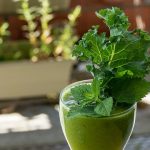Introduction
Vacuum impregnation (VI) is a food processing technique designed to enhance the texture, flavor, and overall quality of food products. It involves the infusion of various substances into food items under a vacuum, which creates conditions that allow for greater penetration and absorption. This process can be used with a variety of foods, including fruits, vegetables, and meats, to improve their properties and extend shelf life. Understanding the mechanism, benefits, drawbacks, and comparison to similar technologies provides a comprehensive view of its role in modern food processing. There are some similarities with osmotic dehydration in terms of the mass transfer of materials but in this case it is out of the food rather than infusing food.
What is Vacuum Impregnation?
Vacuum impregnation is a process wherein a food item is subjected to a vacuum environment, causing air and moisture to be removed from the food’s porous structure. After this, a solution (such as brine, sugar syrup, or flavoring) is introduced under vacuum pressure. The vacuum forces the solution into the food’s pores, which enhances its characteristics and ensures uniform distribution of flavors or preservatives.
Why is Vacuum Impregnation Done?
- Enhancement of Flavour and Texture: Vacuum impregnation allows for the infusion of various substances, such as flavourings, sweeteners, or salts, into the food. This enhances the taste and texture of the final product. For example, fruits can be made sweeter and more flavorful, while vegetables can be given a more appealing texture.
- Improvement in Nutrient Retention: By infusing nutrients or functional ingredients, such as vitamins and minerals, into food products, vacuum impregnation can boost their nutritional value.
- Shelf Life Extension: The process can help in extending the shelf life of food items by incorporating preservatives or by improving the structural integrity of the food, making it less susceptible to spoilage.
- Reduction of Processing Time and Energy: VI can sometimes reduce the need for lengthy and energy-intensive processing methods, such as drying or cooking.
Benefits of Vacuum Impregnation
- Uniform Distribution: One of the key advantages of VI is the uniform distribution of the impregnating solution throughout the food product. This ensures consistent taste and texture in every bite.
- Improved Quality: VI enhances the quality of the food product by improving its sensory attributes, such as flavor, color, and texture. This is particularly beneficial for products where visual appeal and taste are crucial.
- Reduced Waste: By improving the preservation and quality of the food, VI can reduce food waste. Enhanced shelf life and better quality products mean less food is discarded.
- Nutrient Enrichment: VI can be used to fortify food with additional nutrients, which can be beneficial for health-conscious consumers and specific dietary needs.
- Retention of Structural Integrity: Unlike some other processing methods, VI helps maintain the food’s structural integrity, making it suitable for delicate or easily damaged products.
Drawbacks of Vacuum Impregnation
- Cost: The technology and equipment required for vacuum impregnation can be expensive. This includes the initial setup costs and ongoing maintenance.
- Limited Applicability: While VI is versatile, it may not be suitable for all types of foods. Its effectiveness can vary depending on the food’s structure and the type of solution used.
- Complexity of Process: The process requires careful control of vacuum levels and infusion rates. Mismanagement can lead to inconsistent product quality.
- Potential for Over-Infusion: There is a risk of over-impregnation, where too much of the solution is absorbed, potentially altering the food’s texture or flavor unfavorably.
Comparison with Similar Technologies
- Traditional Brining and Marinating
- Process: Traditional brining or marinating involves soaking food in a solution of salt, sugar, or spices over time. This process is generally simpler and less costly than vacuum impregnation.
- Comparison: While traditional methods are effective for imparting flavor, they do not provide the same level of uniformity and consistency as VI. Vacuum impregnation achieves deeper and more even infusion of ingredients, which can result in superior quality and flavor distribution.
- Drying
- Process: Drying removes moisture from food to extend shelf life. Techniques include air drying, freeze-drying, and oven drying.
- Comparison: Drying often changes the texture and can cause loss of nutrients. VI, on the other hand, can enhance flavor and texture without removing moisture. However, drying can be less expensive and less complex compared to VI.
- Pressure-Assisted Thermal Sterilization (PATS)
- Process: PATS uses high pressure and heat to kill microorganisms and extend shelf life. It is often used for canned or jarred foods.
- Comparison: PATS can effectively extend shelf life and ensure food safety but may alter the texture and flavor of the food more than VI. VI tends to preserve the food’s original texture and flavor better while still improving quality.
- Infusion Techniques
- Process: Similar to VI, infusion techniques involve adding flavors or nutrients to food. Methods include direct infusion or using pressure chambers.
- Comparison: VI is unique in its use of vacuum to enhance infusion efficiency. Other infusion techniques might not achieve the same level of penetration and uniformity, making VI a more advanced option in terms of effectiveness.
Conclusion
Vacuum impregnation represents a sophisticated method of enhancing food products through improved flavor, texture, and nutritional content. While it offers several advantages, such as uniform infusion and better quality retention, it also comes with certain drawbacks, including high cost and complexity. When compared to traditional and modern food processing techniques, VI stands out for its ability to uniformly distribute solutions and maintain food quality. However, the choice of processing method ultimately depends on the specific requirements of the food product and the desired outcomes. Understanding these aspects helps food manufacturers select the most appropriate technology for their needs.

Leave a Reply